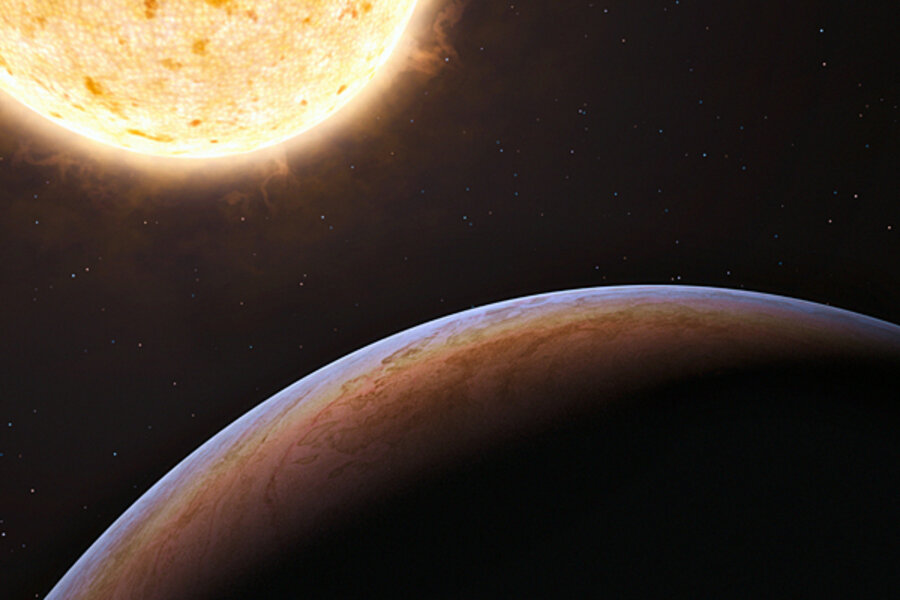Found: a planet not from the Milky Way, circling a star in its death throes
Loading...
In another time and place, this could have been the setting for a tale of interstellar intrigue worthy of Ray Bradbury: a doomed planet orbiting a doomed star from a galaxy that fell victim to cosmic cannibalism.
Yet that's what astronomers with the European Southern Observatory say they've found some 2,200 light-years from Earth. The planet, prosaically named HIP 13044b, is the first planet astronomers have detected in the Milky Way that likely was born in another galaxy.
The team posits that the star and its planet once resided in a small galaxy that orbited the Milky Way. The pair are found among a stream of stars orbiting the galactic center that astronomers have identified as the remnant of a satellite galaxy the Milky Way snagged some 6 billion to 9 billion years ago.
Beyond the novelty of finding a galactic interloper, the planetary system could yield insights into the future of our solar system some 5 billion to 6 billion years from now, according to the team announcing the discovery today.
Based on observations of sun-like stars at various points in their life-stages, our sun is expected to expand to fill the inner solar system as a red giant, only to shrink back over another 2 billion years or so to its final fate as a white dwarf – a shriveled stellar remnant about the size of Earth. Along the way, what remains of the sun will blast its outer layers into the cosmos as a planetary nebula.
Past observations of the new planet's host star, HIP 13044, indicate that it has passed its red-giant phase, the researchers say, and is now firmly on the path to dwarfhood.
"This planet is unique," says Johny Setaiwan, a researcher at the Max Planck Institute for Astronomy in Heidelberg, Germany, who led the team reporting the results in Science Express, the online sibling to the journal Science. "It will tell us about the evolution of a planetary system" after its host star passes the red-giant phase.
The team made its observations of the system using the European Southern Observatory's 2.2-meter telescope on La Silla, a mountain in Chile. Scientists didn't image the planet directly; it's too far away for that. Instead, the team spotted the wobble the planet imparts to the star's spectrum as it orbits.
What they found was an object they estimate at 1.25 times Jupiter's mass orbiting the star every 16 days at an average distance of nearly 11 million miles. By our solar system's standards, that's well inside the orbit of Mercury, the closest planet to the sun.
This posed an obvious question, the researchers acknowledge. What's that planet doing there?
Other close-in planets were engulfed during the red-giant phase. That's the explanation the researchers give for HIP 13044's rotation speed, which is unusually high for a star in such a late stage of its life. As a kind of last will and testament, these other, postulated planets imparted their momentum to the star as they vanished, spinning it up.
For HIP 13044b to appear in its current orbit, it likely began at a greater distance, then migrated inward.
In surviving the star's red-giant phase, however, the planet has set itself up for eradication, says Dr. Setaiwan. The star is quiet now, but it's expected to become unstable again, in which case it likely will engulf the planet, erasing perhaps the last vestige of the first solar system to be identified as coming from another galaxy.





